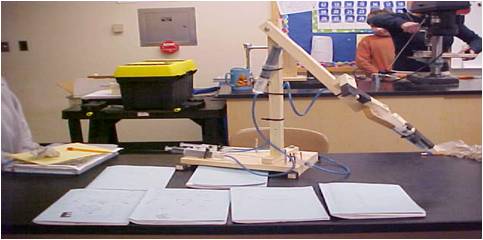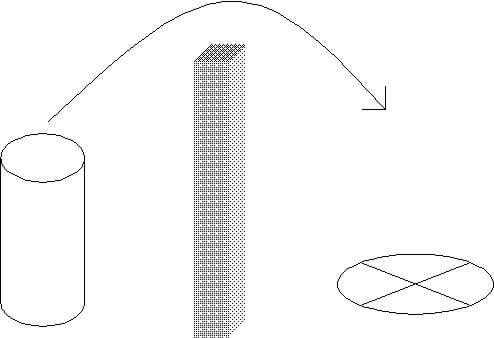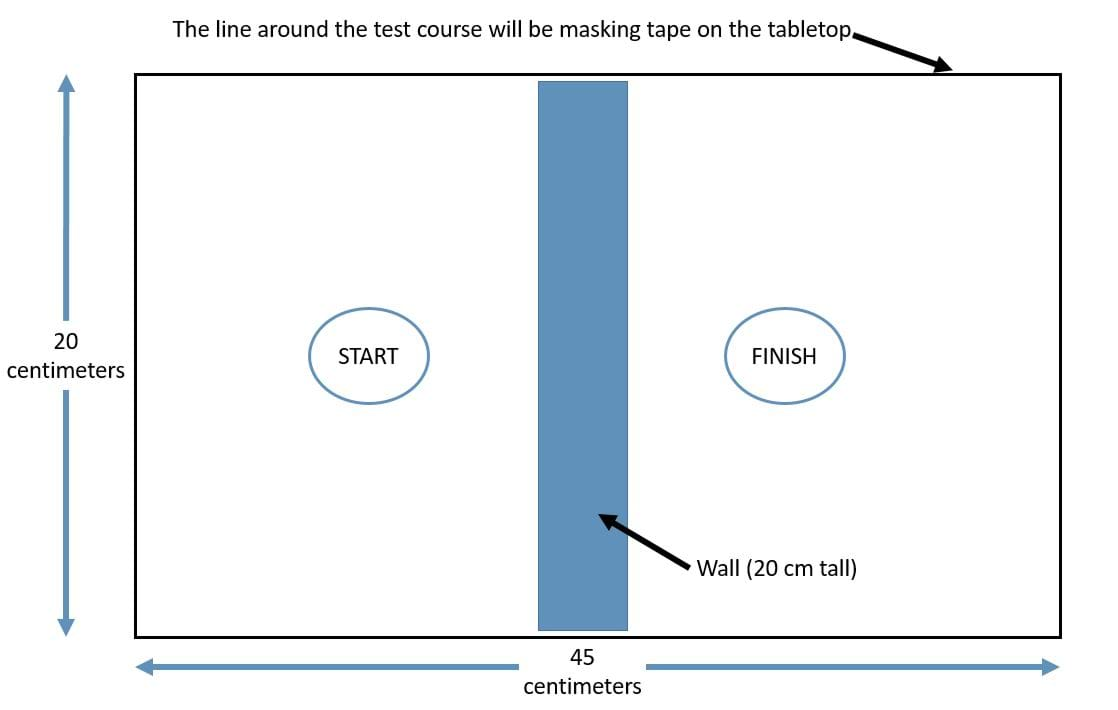Quick Look
Grade Level: 7 (6-8)
Time Required: 3 hours
(4.5 40-minute class periods; see the Procedure section for details)
Expendable Cost/Group: US $30.00 (between $20 and $30, depending on the number of groups)
Group Size: 2
Activity Dependency: None
Subject Areas: Science and Technology
NGSS Performance Expectations:

| MS-ETS1-2 |
| MS-ETS1-4 |
Summary
Students design and build a mechanical arm that lifts and moves an empty 12-ounce soda can using hydraulics for power. Small design teams (1-2 students each) design and build a single axis for use in the completed mechanical arm. One team designs and builds the grasping hand, another team the lifting arm, and a third team the rotation base. The three groups must work to communicate effectively through written and verbal communication and sketches.
Engineering Connection
Just like engineers, students in this activity work in teams and follow the steps of the engineering design process. Engineers develop hydraulic arms for a variety of reasons. Hydraulic arms can be used in situations that are too difficult or dangerous for people to deal with directly or in automated systems. Examples include arms that lift heavy weights and arms that hold a load and unload them into a specific position.
Learning Objectives
After this activity, students should be able to:
- Identify the steps of the engineering design process.
- Recognize the steps of the engineering design process as they design and build.
- Represent solutions to a design process in multiple ways.
- Describe and explain features and purpose of a design.
- Explain the basic concepts of hydraulic and pneumatics.
Educational Standards
Each TeachEngineering lesson or activity is correlated to one or more K-12 science,
technology, engineering or math (STEM) educational standards.
All 100,000+ K-12 STEM standards covered in TeachEngineering are collected, maintained and packaged by the Achievement Standards Network (ASN),
a project of D2L (www.achievementstandards.org).
In the ASN, standards are hierarchically structured: first by source; e.g., by state; within source by type; e.g., science or mathematics;
within type by subtype, then by grade, etc.
Each TeachEngineering lesson or activity is correlated to one or more K-12 science, technology, engineering or math (STEM) educational standards.
All 100,000+ K-12 STEM standards covered in TeachEngineering are collected, maintained and packaged by the Achievement Standards Network (ASN), a project of D2L (www.achievementstandards.org).
In the ASN, standards are hierarchically structured: first by source; e.g., by state; within source by type; e.g., science or mathematics; within type by subtype, then by grade, etc.
NGSS: Next Generation Science Standards - Science
| NGSS Performance Expectation | ||
|---|---|---|
|
MS-ETS1-2. Evaluate competing design solutions using a systematic process to determine how well they meet the criteria and constraints of the problem. (Grades 6 - 8) Do you agree with this alignment? |
||
| Click to view other curriculum aligned to this Performance Expectation | ||
| This activity focuses on the following Three Dimensional Learning aspects of NGSS: | ||
| Science & Engineering Practices | Disciplinary Core Ideas | Crosscutting Concepts |
| Evaluate competing design solutions based on jointly developed and agreed-upon design criteria. Alignment agreement: | There are systematic processes for evaluating solutions with respect to how well they meet the criteria and constraints of a problem. Alignment agreement: | |
| NGSS Performance Expectation | ||
|---|---|---|
|
MS-ETS1-4. Develop a model to generate data for iterative testing and modification of a proposed object, tool, or process such that an optimal design can be achieved. (Grades 6 - 8) Do you agree with this alignment? |
||
| Click to view other curriculum aligned to this Performance Expectation | ||
| This activity focuses on the following Three Dimensional Learning aspects of NGSS: | ||
| Science & Engineering Practices | Disciplinary Core Ideas | Crosscutting Concepts |
| Develop a model to generate data to test ideas about designed systems, including those representing inputs and outputs. Alignment agreement: | Models of all kinds are important for testing solutions. Alignment agreement: The iterative process of testing the most promising solutions and modifying what is proposed on the basis of the test results leads to greater refinement and ultimately to an optimal solution.Alignment agreement: | |
International Technology and Engineering Educators Association - Technology
-
Students will develop an understanding of the attributes of design.
(Grades
K -
12)
More Details
Do you agree with this alignment?
-
Students will develop an understanding of engineering design.
(Grades
K -
12)
More Details
Do you agree with this alignment?
-
Students will develop abilities to apply the design process.
(Grades
K -
12)
More Details
Do you agree with this alignment?
-
Refine design solutions to address criteria and constraints.
(Grades
6 -
8)
More Details
Do you agree with this alignment?
State Standards
Massachusetts - Science
-
Given a design task, identify appropriate materials (e.g., wood, paper, plastic, aggregates, ceramics, metals, solvents, adhesives) based on specific properties and characteristics (e.g., strength, hardness, and flexibility).
(Grades
6 -
8)
More Details
Do you agree with this alignment?
-
Identify and explain the steps of the engineering design process, i.e., identify the need or problem, research the problem, develop possible solutions, select the best possible solution(s), construct a prototype, test and evaluate, communicate the solution(s), and redesign.
(Grades
6 -
8)
More Details
Do you agree with this alignment?
-
Demonstrate methods of representing solutions to a design problem, e.g., sketches, orthographic projections, multiview drawings.
(Grades
6 -
8)
More Details
Do you agree with this alignment?
-
Describe and explain the purpose of a given prototype.
(Grades
6 -
8)
More Details
Do you agree with this alignment?
-
Identify appropriate materials, tools, and machines needed to construct a prototype of a given engineering design.
(Grades
6 -
8)
More Details
Do you agree with this alignment?
Materials List
Each group needs:
- plastic syringes, such as from McMaster-Carr for ~$1.27 per syringe; see note below
- plastic tubing, such as from hardware and pet supply stores for ~$20; see note below
- various wood scraps
- bolts, screws, nuts, washers
- other APPROVED materials
- 1 empty soda can
Note about syringes and tubing: In this activity, all the syringes must be exactly the same and it is important that the plastic tubing fits snugly on the tip of the syringe. A good option is a 50 or 60 cc plastic manual syringe with a tapered tip, such one available from McMaster-Carr—the "60 cc plastic manual syringe with taper tip" for $1.27 per syringe. It may be helpful to purchase the syringes first and then bring one to a hardware or pet supply store to find appropriate sized plastic tubing.
To share with the entire class:
- tape
- 20 x 20 cm piece of wood or cardboard to serve as a wall
- drill (for teacher use or with appropriate supervision)
- saw (for teacher use)
- empty soda can
Worksheets and Attachments
Visit [www.teachengineering.org/activities/view/wpi_hydraulic_arm_challenge] to print or download.Introduction/Motivation
Have you ever seen a car lifted into the air at an auto repair place? Have you ever wondered how an elevator can lift a load of people up into the air? Well, after our project today, you'll have a better understanding of how these work, because we're going to look at hydraulic systems.
Hydraulic systems use a liquid, usually oil, to transmit force. This system works on the same principles as other mechanical systems and trades force for distance. Hydraulic systems are used on construction sites and in elevators. They help users perform tasks that they would not have the strength to do without the help of hydraulic machinery. They are able to perform tasks that involve large amounts of weight with seemingly little effort.
Procedure
Suggested Timing
This activity is comprised of two parts:
- Part 1 - Investigating Pneumatics and Hydraulic Systems Handout: 1 ½ - 2 class periods at 40 minutes each.
- Part 2 – Creating the hydraulic arm: three 40-minute classes (This activity can be done in fewer class periods, but giving students this amount of time enables them to test numerous design ideas and further understand the engineering design process and the underlying concepts.)
Background
Hydraulic systems are used in many different types of machines: control surfaces on airplanes, elevators, automobile lifts, and backhoes. The idea behind a hydraulic system is that force is applied to one point and is transmitted to a second point using an incompressible fluid. You can find detailed background information oon how hydraulic machines work at http://science.howstuffworks.com/transport/engines-equipment/hydraulic1.htm.
Before the Activity
- Build a soda can test area that is 20 x 45 centimeters. Use tape to mark the perimeter of the test area. Place a 20 x 20 cm tall wall in the middle of the test area so the area is divided into two equal areas, each measuring 20 x 22 cm. Draw a circle on each side of the wall. Write "Start" in one and "Finish" in the other. The circles should be ~4 centimeters from the wall and 6 centimeters from the sides. These dimensions are flexible. Smaller would be easier and larger dimensions are harder.

Schematic diagram of the hydraulic arm challenge. 
Playing field for the hydraulic arm challenge.
- Make copies of the journals and handouts.
- Gather materials.
With the Students
Divide the class into groups of two students each. Have each design team:
- Research the engineering design process and answer the questions on the Investigating Pneumatics and Hydraulics Systems Student Handout.
- Research possible solutions to the challenge. Tips: Look for pictures of other mechanical arms (or parts of arms) that perform functions similar to the ones that they must perform. Think about the connection between their team's component and the components it is connect to. The connections are the most challenging part!
- Develop a portfolio (a collection) of sketches that attempt to solve the problem. Share with the entire design team. Upon identifying a promising design, brainstorm with the next design team about attaching them together. Critique (be nice, constructive) the designs and make a short list of pros (+) and cons (-) for each idea. Identify the best ideas and vote to decide upon them.
- Make final engineering sketches of the parts that are needed.
- Construct the prototypes, noting changes, modifications, failures and successes. It is perfectly fine to mark up your engineering sketches. Show your work!
- Test the prototype. TRY TO MAKE IT FAIL. What do you have to do to get it to fail? Can you redesign it to prevent that from happening? Make your design the best it can be. (Students like to make their designs fail. They understand that as an instruction and see it as a good mindset for testing prototypes.)
- Write down information on how long it took for your device to fail.
- Redesign and reconstruct.
- Retest.
- Once satisfied, plot your found data to see how your device improved as you modified it.
- Present the portfolio of marked-up drawings, the finished arm, and demonstrate the arm to the class.
Vocabulary/Definitions
hydraulics: Involving or moved by fluid under pressure.
pneumatics: Involving the mechanical properties of air and other gases. Safety Factor(N): A number used to describe how much more force your device should withstand past the max expected force based on a number of parameters such as material and dimensions (N=1 means only can withstand 100% of expected force, so it will fail at 101% of expected load).
prototype: A working model of a new product or new version of a product.
Assessment
Activity Embedded Assessment: Administer the Arm Investigating Questions and Design Check List.
Post-Activity Assessment: Evaluate the student project using the attached Hydraulic Arm Rubric, with criteria on research, imagining-planning-improving, creativity, written or oral sharing, and how the mechanism meets the challenge.
Making Sense: Have students reflect about the science phenomena they explored and/or the science and engineering skills they used by completing the Making Sense Assessment.
Investigating Questions
See Researching the Engineering Design Process Handout
Safety Issues
Cut and drill the wood if students do not have experience.
Additional Multimedia Support
Watch a 2:27-minute video of three teen girls operating the hydraulic arms they designed to pick up and move marshmallows; see thinkdesign!'s Hydraulic Robot Arm Challenge at YouTube: https://www.youtube.com/watch?v=sicZuYnMMuA
Subscribe
Get the inside scoop on all things TeachEngineering such as new site features, curriculum updates, video releases, and more by signing up for our newsletter!More Curriculum Like This

Students learn about the fundamental concepts important to fluid power, which includes both pneumatic (gas) and hydraulic (liquid) systems.
References
Carpenito, K. and E. Chilton. Hydraulic Arms Challenge. Posted January 2006. Accessed November 7, 2011. (activity inspiration) https://docs.google.com/View.aspx?docid=ah7pxzjtrzfd_baddp39ndp3dv
Hydraulic Arm Research. Posted January 27, 2006. Beebe School of Engineering. Accessed November 7, 2011. (a list of references to support this activity, including info on the arm joint and the engineering design process) http://k12engineering.blogspot.com/2006/01/hydraulic-arm-research.html
Brain, Marshall. How Hydraulic Machines Work. How Stuff Works. Accessed November 7, 2011. http://science.howstuffworks.com/hydraulic.htm
Copyright
© 2013 by Regents of the University of Colorado; original © 2006 Worcester Polytechnic InstituteContributors
Eric Chilton; Karen Carpenito; Elissa MiltoSupporting Program
Center for Engineering Educational Outreach, Tufts UniversityLast modified: October 31, 2020







User Comments & Tips